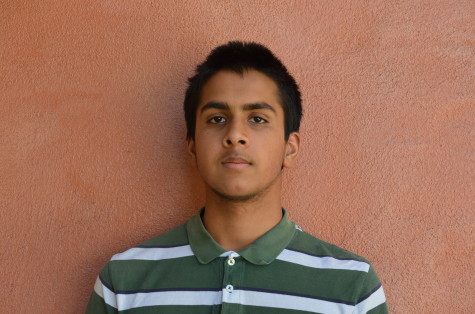iShoot
Smartphones democratize photography
Those photos below – they were all shot with an iPhone 6.
Phones such as the iPhone 6 and Samsung Galaxy S6 Edge are putting quality photography in the hands of more people.
Smartphone cameras have capabilities ranging from focus and exposure control to third-party application support. The attachment of these capabilities to the ubiquitous smartphone democratizes photography. Even those uninterested in technical details of photography can use the iPhone or Android camera to take pictures.
San Jose Mercury News photographer Nhat V. Meyer discussed the impact of personal expertise on smartphone photography.
“Somebody who’s skilled at [photography] is definitely going to be a lot better […] but I think the learning curve to get better on its own is a lot easier than the DSLR just because there’s fewer variables,” Meyer said.
The iPhone 6 camera can use software processing to enhance photos, as the Apple website details. Four images are used to make the final photo more stabilized. Also, if selected, High Dynamic Range (HDR) generates a single image from three captured photos with varied exposure.
Samsung’s Galaxy S6 edge includes auto real-time HDR, which uses two exposure settings.
“There’s a lot of interpolation when you take a picture with a camera phone,” upper school photography teacher Joshua Martinez said. “There’s a lot of post production that’s happening sort of on the fly to give you the semblance of the clarity that you would get with the larger, more high resolution camera.”
A picture taken with an smartphone is accessible to photo editing and social media applications such as Snapchat and Instagram. The iPhone 5 and later iPhone models can also use AirDrop to send photos to a compatible Macintosh laptop or computer without using a cable.
The iPhone and Android camera applications grant casual photographers and enthusiasts alike access to features ranging from time-lapse and slow-motion videos to panorama photos. The front-facing camera, although lower resolution than the rear-facing camera, empowers selfie-takers.
Photography enthusiasts can augment a smartphone camera’s capabilities with third-party camera applications and external lenses.
Smartphone enthusiasts can buy lenses, such as the $129.95 Optrix ExoLens set that includes a wide-angle lens and a telephoto lens which produces an optically zoomed image, and the $79.95 olloclip Photo Lens set, which includes lenses for macro, or close-up, photography, as well as others.
Downloaded applications can be used to control the iPhone and Android cameras. For instance, multiple photos from Apple’s World Gallery are listed as using the application VSCO Cam, which can be used to both take and modify photos and contains features such as a shutter speed slider.
Apple’s developer website states that iOS 8 applications that take pictures can influence aspects of the camera such as focus and exposure. iOS developers will be able to learn more about iPhone camera technologies at Apple’s Worldwide Developer Conference (WWDC) from June 8-12.
This piece was originally published in the pages of The Winged Post on May 13, 2015.

Praveen Batra (9) is a reporter for the Winged Post. He enjoys informative writing, design, and typography. In his spare time, he likes to write mobile...

Ashley Jiang (11) is the photo editor for Winged Post. This is her third year in the journalism program, and she was a reporter her freshman and sophomore...


















![“[Building nerf blasters] became this outlet of creativity for me that hasn't been matched by anything else. The process [of] making a build complete to your desire is such a painstakingly difficult process, but I've had to learn from [the skills needed from] soldering to proper painting. There's so many different options for everything, if you think about it, it exists. The best part is [that] if it doesn't exist, you can build it yourself," Ishaan Parate said.](https://harkeraquila.com/wp-content/uploads/2022/08/DSC_8149-900x604.jpg)




![“When I came into high school, I was ready to be a follower. But DECA was a game changer for me. It helped me overcome my fear of public speaking, and it's played such a major role in who I've become today. To be able to successfully lead a chapter of 150 students, an officer team and be one of the upperclassmen I once really admired is something I'm [really] proud of,” Anvitha Tummala ('21) said.](https://harkeraquila.com/wp-content/uploads/2021/07/Screen-Shot-2021-07-25-at-9.50.05-AM-900x594.png)







![“I think getting up in the morning and having a sense of purpose [is exciting]. I think without a certain amount of drive, life is kind of obsolete and mundane, and I think having that every single day is what makes each day unique and kind of makes life exciting,” Neymika Jain (12) said.](https://harkeraquila.com/wp-content/uploads/2017/06/Screen-Shot-2017-06-03-at-4.54.16-PM.png)








![“My slogan is ‘slow feet, don’t eat, and I’m hungry.’ You need to run fast to get where you are–you aren't going to get those championships if you aren't fast,” Angel Cervantes (12) said. “I want to do well in school on my tests and in track and win championships for my team. I live by that, [and] I can do that anywhere: in the classroom or on the field.”](https://harkeraquila.com/wp-content/uploads/2018/06/DSC5146-900x601.jpg)
![“[Volleyball has] taught me how to fall correctly, and another thing it taught is that you don’t have to be the best at something to be good at it. If you just hit the ball in a smart way, then it still scores points and you’re good at it. You could be a background player and still make a much bigger impact on the team than you would think,” Anya Gert (’20) said.](https://harkeraquila.com/wp-content/uploads/2020/06/AnnaGert_JinTuan_HoHPhotoEdited-600x900.jpeg)

![“I'm not nearly there yet, but [my confidence has] definitely been getting better since I was pretty shy and timid coming into Harker my freshman year. I know that there's a lot of people that are really confident in what they do, and I really admire them. Everyone's so driven and that has really pushed me to kind of try to find my own place in high school and be more confident,” Alyssa Huang (’20) said.](https://harkeraquila.com/wp-content/uploads/2020/06/AlyssaHuang_EmilyChen_HoHPhoto-900x749.jpeg)



